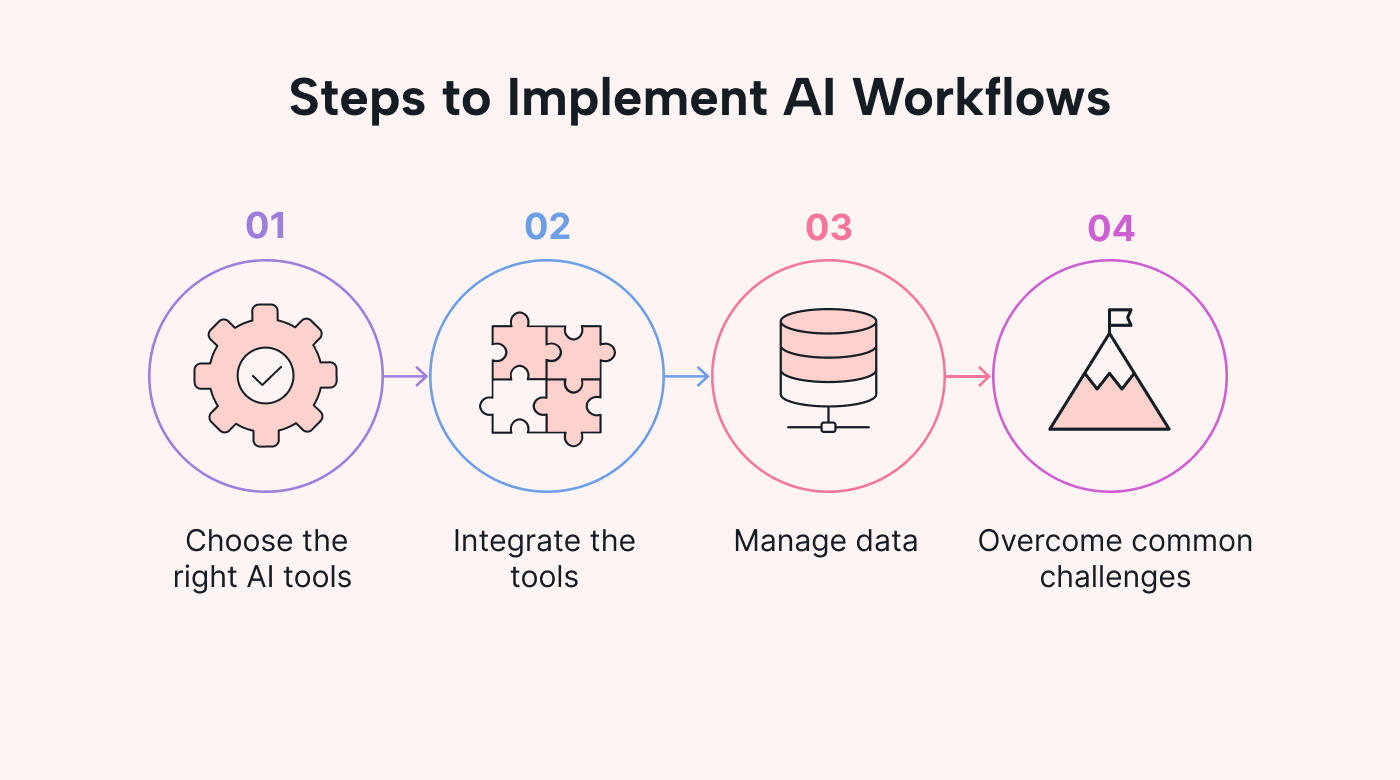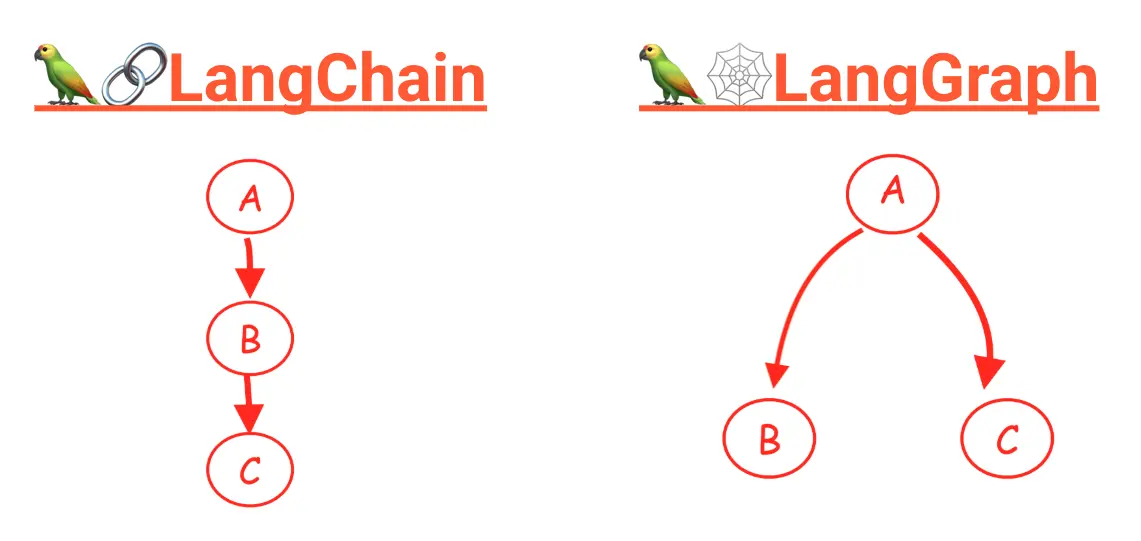
LangGraph vs. CrewAI: Best Framework for AI Workflow Engineering
Explore the showdown between LangGraph and CrewAI, two leading frameworks for AI workflow engineering. Discover their unique strengths and find out which one best suits your project's needs and team dynamics.
LangGraph vs. CrewAI: Best Framework for AI Workflow Engineering
In the fast-paced world of artificial intelligence, selecting the right framework for workflow engineering is essential for success. With the increasing complexity of AI models and the need for collaborative tasks, two frameworks have emerged as frontrunners: LangGraph and CrewAI. In this article, we'll dive deep into the LangGraph vs. CrewAI comparison to help you determine the best AI agent frameworks for 2025.

AI Workflow Engineering Frameworks: An Overview
AI workflow engineering frameworks are tools designed to streamline the development, deployment, and management of AI models. They are indispensable for professionals looking to efficiently orchestrate AI agents and manage complex workflows. Understanding the strengths and capabilities of LangGraph and CrewAI will allow you to make an informed decision when choosing AI workflow tools.
LangGraph Features and Benefits

LangGraph is renowned for its robust features that cater to complex AI workflows. With a focus on flexibility and scalability, LangGraph provides capabilities that empower developers to build detailed, intricate AI systems. Here are some key benefits:
Scalability: LangGraph is built to handle large-scale models, making it ideal for comprehensive AI projects.
Ecosystem Integration: It seamlessly integrates with popular AI frameworks, allowing for easy incorporation into existing workflows.
Modular Architecture: The modular design facilitates iterative development and testing, supporting cleaner and more efficient coding practices.
LangGraph is particularly suited for projects that require parsing vast datasets and building multi-layered AI models. Its architecture supports intricate model designs, making it suitable for AI engineers looking to scale their projects. For those interested in mastering such frameworks, STEM Link's AI Engineering bootcamp provides the practical training needed to excel.
CrewAI Capabilities and Use Cases

CrewAI focuses on enabling collaborative AI tasks and is designed to prioritize teamwork and real-time data sharing. This makes it a go-to choice for projects where collaboration is key. Key capabilities include:
Real-Time Collaboration: CrewAI supports multiple users working simultaneously, making it ideal for teams dispersed across various locations.
User-Friendly Interface: It offers an intuitive interface that lowers the barrier to entry for beginners looking to engage in AI workflow engineering.
Efficient Communication: Built-in communication tools foster dialogue within teams, facilitating swift decision-making.
CrewAI excels in environments where collaborative input and feedback loops are crucial. It is the framework of choice for teams that rely on rapid prototyping and agile methodologies. For budding project managers eager to harness the power of CrewAI, enrolling in STEM Link's Project Management bootcamp could provide valuable insights.
Choosing AI Workflow Tools: Critical Considerations
When you are in the process of choosing AI workflow tools, several factors should weigh heavily in your decision. Here's a quick guide to evaluating your options:
Project Scope: Determine the complexity and scale of your project. LangGraph might be more suitable for large-scale and complex projects, while CrewAI is better suited for team-oriented tasks.
Team Dynamics: Assess the collaboration needs of your team. CrewAI's strengths in communication make it ideal for distributed teams.
Resource Availability: Evaluate the availability of computational resources and alignment with existing infrastructure. LangGraph’s integrations might offer a seamless transition if you are already using specific AI tools.
Balancing these considerations will guide you toward the most compatible framework for your needs.
LangGraph vs. CrewAI Performance Analysis
Performance is paramount in AI agent orchestration frameworks. Here’s a performance analysis to help you compare LangGraph and CrewAI:
LangGraph for Complex AI Workflows
LangGraph shines with its ability to handle multiple AI processes concurrently without compromising performance. Its scheduling algorithms optimize resource allocation, reducing execution time significantly. For AI engineers involved in data-heavy fields, LangGraph's performance guarantees that projects remain on track even as they grow in complexity.
CrewAI for Collaborative AI Tasks
CrewAI’s performance is optimized for environments where teamwork and concurrent model iterations are common. Its real-time coordination between team members ensures that collaborative tasks are executed efficiently. If your workflow necessitates horizontal scaling across collaborative platforms, CrewAI’s robust design ensures smooth interactions.
AI Workflow Engineering Best Practices
Regardless of the framework you choose, adhering to best practices in AI workflow engineering is crucial:
Leverage Modularity: Implement component-based designs that allow for modular testing and debugging.
Focus on Scalability: Design workflows that can scale efficiently to accommodate growing data and user inputs.
Enhance Collaboration: Utilize tools that foster team communication and knowledge sharing, which is crucial when using CrewAI.
LangGraph and CrewAI Integration
For organizations seeking to maximize their AI initiatives, integrating both LangGraph and CrewAI can offer comprehensive solutions. The combined use can leverage the robust processing power of LangGraph along with the collaborative features of CrewAI, resulting in particularly versatile AI workflows.
In conclusion, both LangGraph and CrewAI present unique advantages, catering to different aspects of AI workflow engineering. Carefully assessing your project’s needs and your team’s dynamics will help you select the most effective framework for your next AI project.
You may also like
The Complete Guide to Best AI Models, Model Pricing & Real-World Applications
Navigate the complex LLM landscape with our comprehensive guide. Understand model selection, pricing structures, and real-world applications tailored for developers, teams, and professionals while making informed AI decisions that save money without compromising quality.
The Complete Software Engineer Roadmap 2026: From Zero to Hired in 8 Months (No Degree Required)
This roadmap has placed 250+ complete beginners into software engineering roles in 2025 via [STEM Link](https://stemlink.online/products/bootcamps)**, bypassing the traditional path entirely. No CS degree required. No algorithms PhD needed. No leetcode grinding for 2 years.
Cloudflare Meltdown Again: 20% of The Internet Is Down alongside Notion & LinkedIn
Cloudflare has a global service disruption that took nearly 20 percent of the internet offline. Millions of users were suddenly met with 500 Internal Server Errors, and major platforms stopped responding. Essential services such as npm, LinkedIn, Stack Overflow, Canva, Claude, Perplexity, and Clerk all went down at the same time, creating a chain reaction across the digital world.


